Rose Jubilee of St. Petersburg: features of the variety, planting and care
Species diversity roses allows you to choose such beauties who will decorate the garden. Breeders, crossing a polyanthus rose with a tea room, bred the species floribunda. He gained recognition among flower growers due not only to the beauty of flowers, but also to resistance to frost and some diseases. The most luxurious representatives of the species are the Yubiley St. Petersburg variety. To grow it in your rose garden is the desire of every gardener.
European breeders know the Jubilee of St. Petersburg rose under the name Jubilee of the Prince of Monaco. It belongs to those flower varieties that were bred by the French biologists of the House of Meilland at the turn of the 20th and 21st centuries. The real name of the variety is associated with a solemn event taking place in the city of St. Petersburg. In honor of the three-hundredth anniversary, hundreds of beautiful rose bushes were planted on the streets of the northern capital, which were donated by breeders from France.
Content:
- Description of the rose
- Reproduction and planting
- Care advice
- Diseases and pests of the rose
- Application of the variety in garden design
Description of the rose
The variety belongs to the most remarkable representatives of the floribunda species, which are classified as profusely flowering. The bushes of the plant are no more than eighty centimeters high. Well branched, with matte bright green leaves, they attract with the beauty of the rose:
- The flower reaches ten centimeters in diameter.
- Forty petals are packed so tightly that the stamens do not open until the rose has faded.
- When opening, the bud first reveals the whiteness of its petals with a red stripe along the edge.
- Over time, the scarlet strip spreads over most of the flower.
- The buds are collected in inflorescences, in which there are up to seven rose cups.
- The showiness of the variety in the structure of the flower, its color. It is not for nothing that the variety is called Cherry Parfait for the brightness of the inflorescences.
The selection was so successful that the resulting gorgeous flower delights not only gardeners, but also the strict jury of international competitions. Rose Jubilee of St. Petersburg won more than once, overshadowing other varieties with its grace.
Reproduction and planting
In order for this variety to settle in the rose garden, you need to know the rules for its reproduction. The most common way is considered grafting... As soon as the shoots of the ornamental shrub begin to lignify, they begin to harvest the cuttings. Their length should reach eight centimeters, and the diameter should be about a pencil. Shoots are cut off half a centimeter above the bud. At the top, the cut should be straight, at the bottom - at an angle.
Having freed the lower part of the shoots from the foliage, they are immersed in the Kornevin preparation for several minutes. The cuttings are planted in prepared grooves 15-20 centimeters deep. After planting the shoots, they are covered with a film, creating greenhouse conditions for the cuttings.
While the planting material is rooting, it is necessary to regularly ventilate and water it.
Fertilization will not hurt either. Before rooting, it is best to cut the buds that appear on the branches. For winter planting roses Anniversary of St. Petersburg is closed with a special material. A transplant to a permanent place can be carried out after the young bush is two years old.And here it is important to choose a comfortable place for the beauty: sunny, protected from drafts. Dig a planting hole in advance, filling it with two buckets of garden soil. Add a bucket of sand, humus, peat and a little crushed dry clay.
Having dug everything up with a shovel, flavored with superphosphates and bone meal. The dimensions of the pit for the rose bush should reach half a meter in depth and width. When planting a bush, the main point is to deepen the graft bud by two to five centimeters. Rose bushes of the Jubilee St. Petersburg variety take root well when properly planted in spring.
Care advice
Rose bushes will bloom for a long time and profusely if they are looked after according to the rules of agricultural technology:
- Regularity glaze important for the development of the rose and its budding. Pour a bucket of water under each plant, previously slightly heated.
- During the growing season, the plant is fed with a solution mullein or nitrogen fertilizers twice. Before winter, superphosphate and potash fertilizers are applied.
- To retain moisture, the ground around the bushes is covered with a layer sawdust... Mulch will preserve useful substances, will not allow weeds to grow.
- Pruning a rose of the Jubilee of St. Petersburg variety is necessary in the spring. At this time, you can form a bush by partially shortening the branches by 10-15 centimeters. In the summer, pruning will help the bush bloom longer.
- For the winter, roses are covered by removing unripe shoots and buds. At this point, you can spray the plant with Bordeaux liquid to prevent fungal diseases.
A beautiful specimen of flowers for the next year will delight you with graceful cups of roses with proper care.
Diseases and pests of the rose
Among the main diseases of the rose variety are fungal pathologies. Rust infects an ornamental plant in late spring. Fungal spores are visible on leaves, stems, buds. The rose can die if not taken action. First of all, all the affected parts of the flower are removed, destroying them. Then the bushes are treated with a solution of laundry soap every other day. You can alternate it with wormwood infusion. For its preparation, four hundred grams of herbs are poured with water and insisted for a day. From chemical preparations, Fitosporin will cope with the disease.
The infection can also cause cancer of the stem of the rose, if brown blotches are found on the branches, they are cut off, and the roses are treated with a solution of copper sulfate.
Powdery mildew detect through the appearance of a white bloom on the leaves. The disease develops due to waterlogging of the soil, excess in fertilizing with nitrogen fertilizers. Spraying with drugs such as Fundazol will help save the plant. Black spots of different sizes on the leaves of a rose are a symptom of another fungal disease. It is necessary to fight the disease by spraying with preparations containing copper. And it is better to prevent the pathological state of the plant by means of proper agricultural technology, by burning fallen leaves in the fall.
Of the pests, the most common on the rose aphiddrinking juices from leaves, stems and buds. The pest is clearly visible on the leaves in large colonies. You can spray the bushes with well-known preparations such as Intavir, or a soap solution. Spider mites love to feast on the sweet nectar of a flower, ruining it. With him, the reprisal will be quick with the help of insecticidal agents.
It has long been known that disease occurs when a plant is weakened and uncomfortable. Providing the necessary conditions for the garden queen will protect her from ailments.
Application of the variety in garden design
Rose Anniversary of St. Petersburg is easy to use for garden decoration:
- Group plantings of bushes look great on a green lawn, refreshing it.
- Rows of bushes against the background of coniferous trees are an original find of landscape designers.
- The variety is combined with other roses on the border of the transition from white to pink and red.
- Rose Anniversary of St. Petersburg is used in mixborders. The flower plays the role of a soloist dominating the rest of the plants.The beauty's retinue may include white delphiniums, candles red lupines, noble lilies. Do not mix many flora representatives. It is enough to pick up 3-4 companions for the beautiful rose.
- Narrow-leaved lavender and dark-colored sage complement the white petals with a red border.
- Scattering bells will only enhance the nobility of the rose Anniversary of St. Petersburg.
To create interesting compositions using a gorgeous variety of roses is a difficult task that requires taste and imagination.
More information can be found in the video:




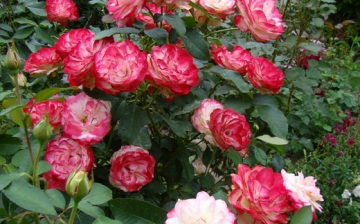
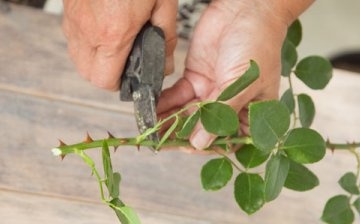

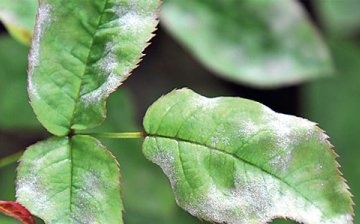







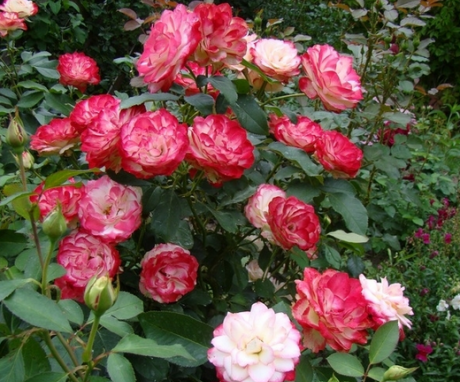
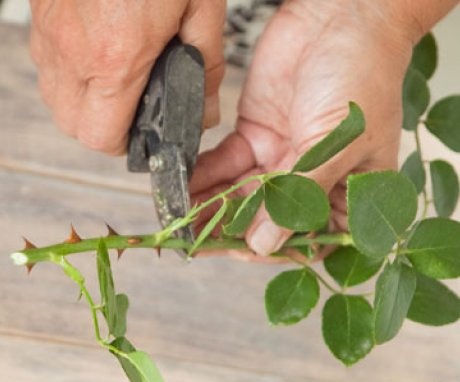

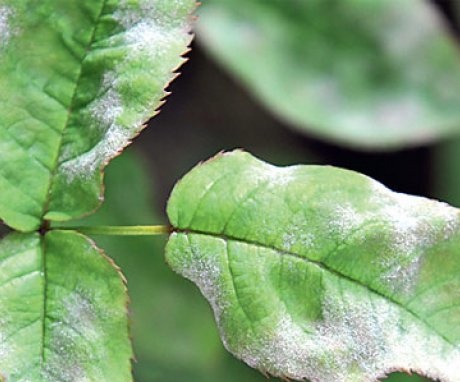
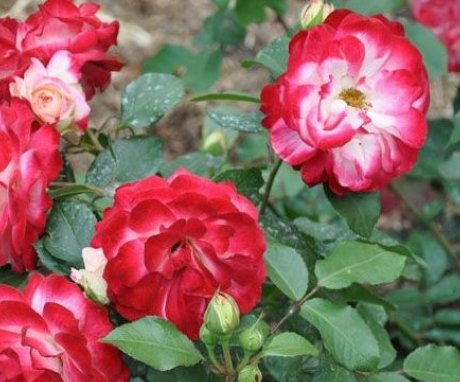
In order for a rose to have high frost resistance, it must be propagated not by cuttings, but by grafting a cultivated bud on a rosehip. Of course, this method will be more difficult, but the result will be much better.
Rose Jubilee St. Petersburg will become an adornment of any garden plot, to such an extent it looks majestic and original. The main thing is to ensure that aphids do not start up on the plant, and spray the bushes with insecticidal agents in advance. To avoid fungus, you need to organize proper watering, and avoid excess moisture in the soil.